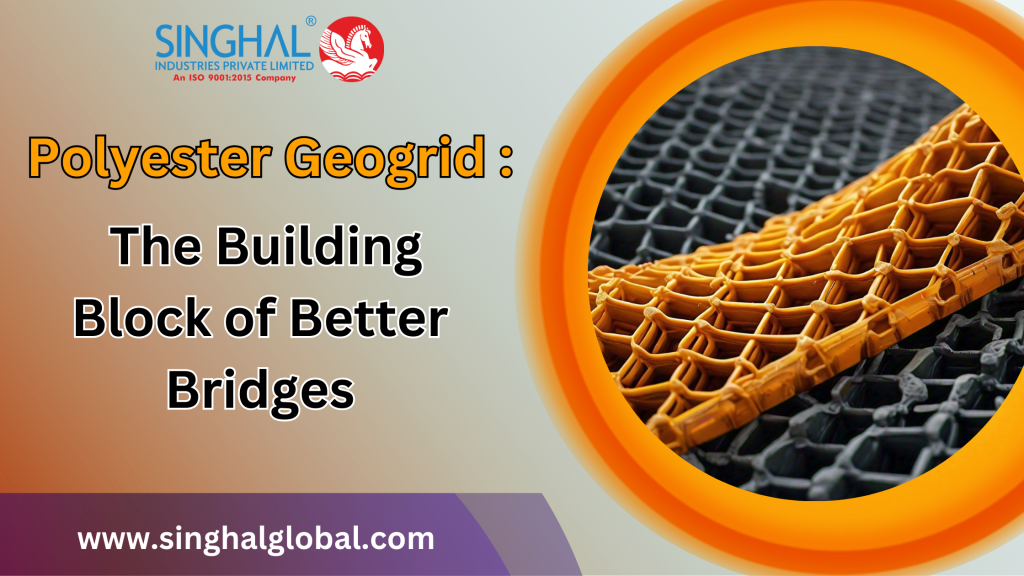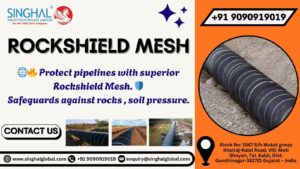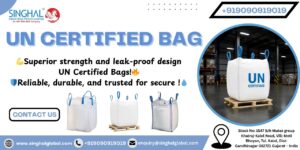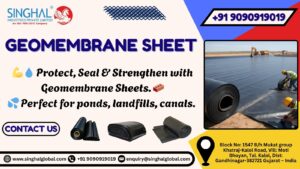Usually, civil engineering infrastructural projects like bridge construction experience harsh conditions such as high loading, variable weather, and continuous wear and tear. This has, therefore led to innovations in the application of materials with regards to improved performance, durability, and sustainability of such structures towards integrity in construction. This one of the materials that in the design and construction of modern bridges is very important, polyester geogrids. The unique characteristics of polyester geogrids have widely spread them for application in building strength, stability, and longevity into critical components of bridge foundations and abutments. Polyester Geogrid Installation makes this item very useful.
What is Polyester Geogrid?
A geogrid is a synthetic material that is used in civil engineering for soil reinforcement. Geogrids are made of polymeric materials, designed to have an open-grid structure, interlocking with the surrounding soils or aggregates in order to better distribute loads. Polyester geogrids consist of high-strength polyester fibers that are woven or knitted in a mesh pattern. These geogrids have a protective covering of resistive layer that makes it safe for weathering effects of sunlight through UV radiation, chemical breakdown as well as moisture.
The main difference from all others is the tensile strength property and very little elongation. Polyester geogrid is the best performer where strength in loads applies since that is the only thing one gets where some stability of continuous bridges could be attained to hold good loads. Polyester Geogrid Price are very reasonable at Singhal Industries.
Advantages of Polyester Geogrid in Bridge Construction
The addition of polyester geogrid to the bridge foundation and retaining fences proposes a number of advantages that increase the performance and extend the life of the construction.
Better Load Distribution
Polyester geogrid enables the appropriate and effective allocation of weight through the soil or aggregate base under the bridge. When it is used in the foundation or the substructure, the geogrid spreads out the weight of the bridge evenly over a wider area that in turn reduces the possibilities for soil settlement or failure. So, it prevents localized points of weakness that would reduce the stability of the entire bridge. Polyester geogrids allow construction based on more durable and more reliable foundation systems because these reinforce the soil or the gravel underneath the bridge. Singhal Industries is well-known Polyester geogrid supplier in the country.
Improved Structural Stability
The polyester geogrids improve the overall structural stability of a bridge. Polyester geogrids act as a layer of reinforcement to prevent differential settlement, which is one common problem in building bridges. The geogrid restrains movement, which leads to cracks or shifting along the foundation of the abutments and walls in the bridge by stabilizing the soil or embankment.
Sustainability
Polyester geogrid is made to be very elastic. It can take up harshest environmental conditions year after year. Its resistance towards UV, chemical degradation as well as resistance toward absorbing dampness makes it highly apporpriate to task targeting long-lasting infrastructure. Polyester geogrid can last for decades without losing the strength and performance, reducing need for repair or replacement. Long-term of polyester geogrids: It contributes to the life of the bridge, reducing maintenance costs and service life for the structure.
Cost-Effectiveness
The use of polyester geogrid in bridge construction saves considerable costs in the long run. Because they are very efficient in load distribution, geogrids make it possible to minimize the use of excess resources on conventional materials such as concrete or steel. In addition, the high durability and long life of polyester geogrids also contribute to lower maintenance costs and keep engineers and contractors in check. The use of polyester geogrids reduces the overall cost of construction and long-term maintenance for bridge projects and maximizes the financial investment.
Environmental Sustainability
Besides the sustainable construction practices, polyester geogrids have an environmental advantage. They save considerable amounts of natural resources such as stone, sand, and gravel, which would otherwise be used in large quantities to construct the foundation. In addition, they are totally recyclable products, which enable the construction of infrastructure in a fully environmentally friendly manner. There are possible reductions in raw materials as well as impacts in surrounding ecosystems that align well with the emerging need to address modern civil infrastructure through the perspective of sustainable engineering practice.
Faster Construction Speed
Because polyester geogrids are lightweight and easy to manage, speed during construction is accelerated. They are light in weight, thus easily transported, stored, and installed. Workers can therefore lay down the geogrid very fast while preparing the foundation or substructure. This saves time and will enable the bridge project to meet the schedule. It enables contractors to complete their work faster and saves the project duration.
Applications of Polyester Geogrid in Bridge Construction
Polyester geogrids can be applied to all components of bridge construction and help in different aspects of structure stability and performance.
Bridge Foundations
Some of the major applications in construction, especially in bridge construction, are in the foundation. Geogrids are used in fortifying the soil or aggregate base that will serve as the support for the bridge. Polyester geogrids assist in establishing a stable and solid foundation of the bridge by improving load distribution and the ability of the soil to support heavy loads.
Bridge Abutments and Retaining Walls
Polyester geogrids can be utilized in abutment and retaining wall structure; these are critical in helping the bridge deck and maintaining soil steadiness within the structure. Geogrids are entrenched into the backfill material behind the walls to prevent soil erosion, allow proper drainage, and hence minimize the risk of a failed wall due to lateral forces exerted on it.
Embankments and Slopes
Polyester geogrids can be used to support bridge approaches or roadways in embankments and slope stabilizations. At the same time, in the process, soil gets prevented from getting washed away and hence prevents slope failure. The approach sections of the bridge are also ensured stability.
Conclusion
Polyester geogrids have become essential in the modern construction of bridges and provide a multitude of advantages that make the entire structure stable, durable, and long-lasting. maintaining soil stability within the structure.
Load distribution and improvement in durability contribute to more safety and efficiency of getting an overall project completed with the use of polyester geogrids for reinforcing foundations and retaining walls. As increasing demand is present for eco-friendly and value-for-money solutions in infrastructures, polyester geogrid will be an inevitable component used in future construction of the bridges associated with more security, reliability, and respect for nature and environmental causes.
Frequently Asked Questions (FAQs)
How long does Polyester Geogrid last?
Typical life duration for slopes and embankments are 50 ~ 100 years.
Can Polyester Geogrid be used in wet conditions?
The polyester geogrid can be utilized in both dry and wet-cast atmospheres.
How does Polyester Geogrid stabilize soil?
They have increased tensile power and a higher elastic modulus than mud enabling them to allocate loads more effectively and deliver better reinforcement in construction applications than they otherwise would.
How is Polyester Geogrid installed?
Anchor the Geogrid with small piles of total fill or a washer and pin. Heavy-gauge U-staples may also be utilized by driving them into the subsoil through the apertures of the grid. Unroll the Geogrid, align it, and fetch it taut to remove wrinkles and laydown slack with hand tension, then protected in place









